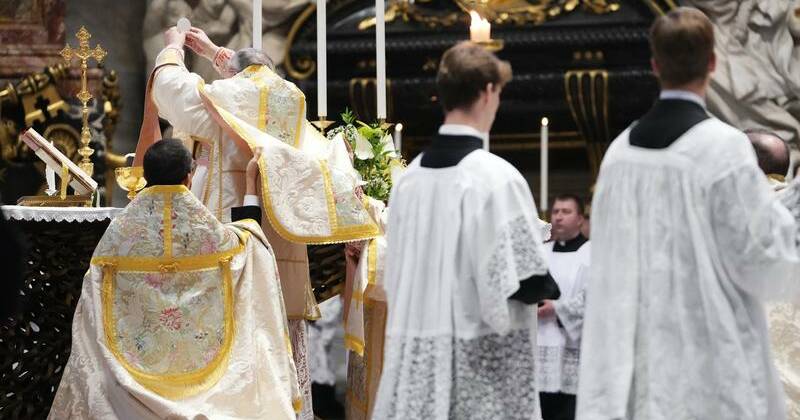
A traditional Latin Mass was celebrated at St. Peter’s Basilica on August 26, 2023, under the leadership of Cardinal Raymond Burke, marking a significant moment for traditionalist Catholics. This event took place with the explicit permission of the newly elected Pope Leo XIV, offering a renewed sense of optimism to those who felt sidelined after Pope Francis imposed restrictions on the ancient liturgy in 2021.
The basilica drew a crowd of several thousand pilgrims, many of whom were young families dressed in traditional attire. Women adorned themselves with lace veils, creating a striking scene as they filled the altar area to capacity. Cardinal Burke led the liturgy, which lasted two and a half hours, featuring hymns, incense, and a ritualistic display of priests bowing before the altar, their backs turned to the congregation.
For many attendees, this event represented a hopeful sign that Pope Leo XIV may be more attuned to their concerns than his predecessor. The traditionalists have felt a profound sense of loss following Pope Francis’s 2021 directive, which restricted the celebration of the Latin Mass. This decision followed a perceived association between the ancient liturgy’s resurgence and the rise of political conservatism among Catholics, particularly in the United States, where church attendance in more progressive parishes has declined.
Rubén Peretó Rivas, an Argentine organizer of the pilgrimage, expressed his optimism, stating, “The first signs of Pope Leo are those of dialogue and listening, truly listening to everyone.” This sentiment resonates with many traditionalists who have felt like “orphans” within the Church.
Context of the Latin Mass Controversy
The ongoing debates surrounding the Latin Mass can be traced back to the Second Vatican Council in the 1960s, which aimed to modernize Church practices. One of the significant reforms from this council was the introduction of Mass in the vernacular, reducing the prominence of Latin. While the Latin Mass remained accessible in the following decades, it was not widely celebrated until Pope Benedict XVI relaxed restrictions in 2007. This move was part of his broader outreach to traditionalists who wished to retain older rites.
Conversely, Pope Francis reimposed restrictions in 2021, citing concerns that the Latin Mass had become a divisive force and was being co-opted by those opposed to the Vatican II reforms. The reaction to this crackdown has been mixed, with many traditionalists arguing it only exacerbated existing divisions within the Church.
After Leo XIV’s election, Christian Marquant, a French organizer of the recent pilgrimage, wrote to the new Pope on behalf of 70 traditionalist groups. The letter requested permission to celebrate a Mass according to the ancient rite during their annual pilgrimage to Rome. Following a meeting between Cardinal Burke and Pope Leo on August 22, 2023, the Pope granted this request, allowing the traditional Mass to take place.
Reactions and Future Implications
During the Mass, Burke refrained from mentioning Pope Francis or the previous restrictions in his homily, focusing instead on the significance of Pope Benedict’s reforms. He emphasized the importance of the sacred liturgy, stating, “Through Benedict’s reform, the whole church is maturing in an ever deeper understanding and love for the great gift of the sacred liturgy.” This assertion underscores the ongoing desire among traditionalists for broader acceptance and recognition within the Church.
Recent leaked Vatican documents have cast doubt on the rationale behind Francis’s restrictions, suggesting that a majority of bishops were generally satisfied with the Latin Mass and warned that limiting it could lead to more harm than good. The implications of this evolving narrative could signal a shift in how the Vatican approaches liturgical practices in the future.
As Pope Leo XIV embarks on his papacy, traditionalists are watching closely for signs of unity and reconciliation. The recent celebration of the Latin Mass at St. Peter’s Basilica may just be the beginning of a renewed dialogue within the Church, one that seeks to bridge the gap between traditional and contemporary practices.






